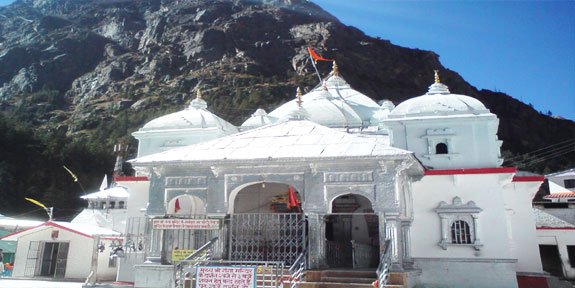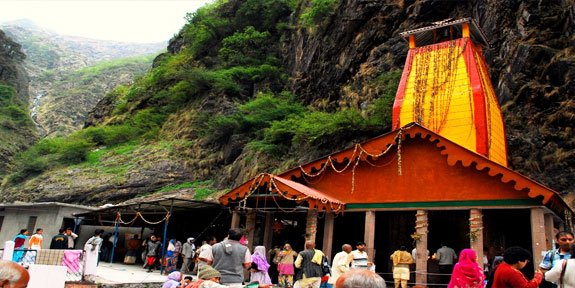Kedarnath Dham

Kedarnath is a town located in the Indian state of Uttarakhand and has gained importance because of Kedarnath Temple. Kedarnath Mandir (Kedarnath Temple) is one of the holiest Hindu temples dedicated to the god Shiva and is located on the Garhwal Himalayan range near the Mandakini river in Kedarnath, Uttarakhand in India. Due to extreme weather conditions, the temple is open only between the end of April (Akshay trutya) to Kartik Purnima (the autumn full moon, usually November) every year. During the winters, the vigrahas (deities) from Kedarnath temple are brought to Ukhimath and worshipped there for six months. Lord Shiva is worshipped as Kedarnath, the ‘Lord of Kedar Khand’, the historical name of the region.
The temple is not directly accessible by road and has to be reached by a 14 kilometres uphill trek from Gaurikund. Pony and manchan service is also available. The temple is believed to have been built by Pandavas and revived by Adi Sankaracharya and is one of the twelve Jyotirlingas, the holiest Hindu shrines of Shiva.
Badrinath Dham

Badrinath is a holy town and a nagar panchayat in Chamoli district in the state of Uttarakhand, India. It is the most important of the four sites in India’s Char Dham pilgrimage and gets its name from the Holy temple of Badrinath.Badrinath Temple, sometimes called Badrinarayan Temple, is situated along the Alaknanda river, in the hill town of Badrinath in Uttarakhand state in India. It is widely considered to be one of the holiest Hindu temples, and is dedicated to god Vishnu. The temple and town are one of the four Char Dham and Chota Char Dham pilgrimage sites. It is also one of the 108 Divya Desams, holy shrines for Vaishnavites. The temple is open only six months every year (between the end of April and the beginning of November), due to extreme weather conditions in the Himalayan region.
The main deity worshiped in the temple is a one meter tall statue of Vishnu as Lord Badrinarayan, made of black stone. The statue is considered by many Hindus to be one of eight swayam vyakta kshetras, or self-manifested statues of Vishnu.The murti depicts Vishnu sitting in meditative posture, rather than his far more typical reclining pose.
Gangotri Temple

Gangotri is a town and a Nagar Panchayat (municipality) in Uttarkashi district in the state of Uttarakhand, India. It is a Hindu pilgrim town on the banks of the river Bhagirathi. It is on the Greater Himalayan Range, at a height of 3,100m.
Gangotri, the origin of the River Ganges and seat of the goddess Ganga, is one of the four sites in the Chota Char Dham pilgrimage circuit.The river is called Bhagirathi at the source and acquires the name Ganga (the Ganges) from Devprayag onwards where it meets the Alaknanda. The origin of the holy river is at Gaumukh, set in the Gangotri Glacier, and is a 19 km trek from Gangotri.
According to Hindu mythology, Goddess Ganga took the form of a river to absolve the sins of King Bhagiratha’s predecessors, following his severe penance of several centuries.
Yamunotri Temple

Yamunotri is the source of the Yamuna River and the seat of the Goddess Yamuna in Hinduism. It is situated at an altitude of 3,293 metres (10,804 ft) in the Garhwal Himalayas and located approximately 30 kilometers (19 mi) North of Uttarkashi, the headquarters of the Uttarkashi district in the Garhwal Division of Uttarakhand, India. It is one of the four sites in India’s Chhota Char Dham pilgrimage. The sacred shrine of Yamunotri, source of the river Yamuna, is the westernmost shrine in the Garhwal Himalayas, perched atop a flank of Bandar Poonch Parvat. The chief attraction at Yamunotri is the temple devoted to the Goddess Yamuna and the holy thermal springs at Janki Chatti (7 km. Away).
Close to the temple are hot water springs gushing out from the mountain cavities. Surya Kund is the most important kund. Near the Surya Kund there is a shila called Divya Shila, which is worshipped before puja is offered to the deity. Devotees prepare rice and potatoes, tied in muslin cloth, to offer at the shrine by dipping them in these hot water springs. Rice so cooked is taken back home as prasadam. The pujaris of Yamunotri come from the village of Kharsali near Janki Chatti.

